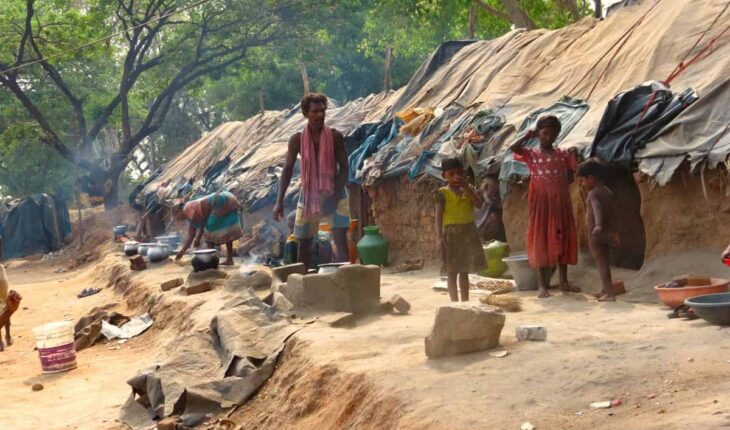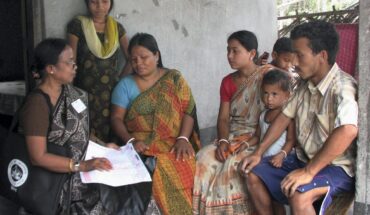
A lady in TamilNādu(Salem) jumped in front of a running bus to commit suicide to get compensation money. Someone had told her that those who died in an accident got money in the form of compensation so she committed suicide so her son could pay his fees for a private college. At the same time as per the NITI Aayog’s Report ‘National Multidimensional Poverty Index: A Progress Review 2023’, 25 nations, including India, have achieved the remarkable feat of reducing their global Multidimensional Poverty Index (MPI) values by half within 15 years. Record 13.5 crore people moved out of multidimensional poverty between 2015-16 and 2019-21. According to the report, this progress serves as evidence that rapid advancements in poverty reduction are indeed feasible. Among the countries that have achieved this milestone are Cambodia, China, Congo, Honduras, India, Indonesia, Morocco, Serbia, and Vietnam.
The most recent update of the global Multidimensional Poverty Index reveals that a significant milestone has been achieved in India. During the period from 2005-06 to 2019-21, a staggering 415 million individuals in India were lifted out of poverty. This figure represents a substantial proportion of the country’s population, which is currently estimated to be over 1.4 billion. The report highlights remarkable improvements in key indicators of poverty. The percentage of individuals lacking access to cooking fuel decreased from 52.9% to 13.9%, while those without proper sanitation decreased from 50.4% to 11.3%. Notably, deprivation across all indicators has declined in India, particularly among the poorest states and disadvantaged groups, including children and individuals belonging to disadvantaged caste groups. These groups have witnessed the most significant progress in terms of absolute poverty reduction.
According to the report, India has registered a significant decline of 9.89 percentage points in several of India’s multidimensionally poor from 24.85% in 2015-16 to 14.96% in 2019-2021. The rural areas witnessed the fastest decline in poverty from 32.59% to 19.28%. During the same period, the urban areas saw a reduction in poverty from 8.65% to 5.27%. Uttar Pradesh registered the largest decline in the number of poor with 3.43 crore people escaping multidimensional poverty. Providing multidimensional poverty estimates for the 36 States and Union Territories and 707 Administrative Districts, the Report states that the fastest reduction in the proportion of multidimensional poor was observed in the States of Uttar Pradesh, Bihar, Madhya Pradesh, Odisha, and Rajasthan.
But the picture is not so colourful and if we go through the black and white side of the picture we are completely disappointed. The per capita income of Tamil Nadu is Rs 2,41,131 and this is not less than a developed state like Punjab and Haryana. The major factor is income inequalities and lack of government spending on education and health. Higher education should be free either for a scheduled cast student or a general student in a private college.
Moreover, according to the report the maximum poverty reduction is in Uttar Pradesh and Bihar. Someone is playing with data, on where the global hunger index of India has increased and how can we achieve this remarkable decline in poverty. The truth is, that the inequalities are still high in India.
It is an important point that much of the wealth gains are due to property and stock market booms, which do not help in any employment generation opportunities. There has been an acute rise in economic inequalities with negative or stagnant growth in the past years. There are 119 billionaires in India. Between 2018 and 2022, India is estimated to produce 70 new millionaires every day.
The crucial point is that unless there is fast economic growth there will be nothing to redistribute but poverty. Fast economic growth is the necessary condition for reducing poverty and inequalities although it may not be a single factor. Poorest Indian states have infant mortality rates higher than those in sub-Saharan Africa. India accounts for 17% of global maternal deaths and 21% of deaths among children below five years. These shocking figures are given by Oxfam (Oxford Committee for Famine Relief) in its report “The inequality virus 2022”.
According to Oxfam’s estimates, the increase in wealth of the top 11 billionaires of India during the pandemic can sustain the MNREGA scheme for 10 years or the health ministry for 10 years. A report by Oxfam ranked India at 147th out of 157th countries in terms of inequality. The report highlights that 77% of the total national wealth of India was proprietary to the top 10% of the population. In 2017, the richest 1% of the Indian population ended up with 73% of the wealth generated. This is blatantly opposite to the 67 million Indians (the bottom poorest half), who only saw a 1% increase in their wealth. Because of this accumulation of wealth, economic inequalities will increase shortly.
Dr.Harvinder Kaur, Associate Professor of Economics in Ambala, views are personal






